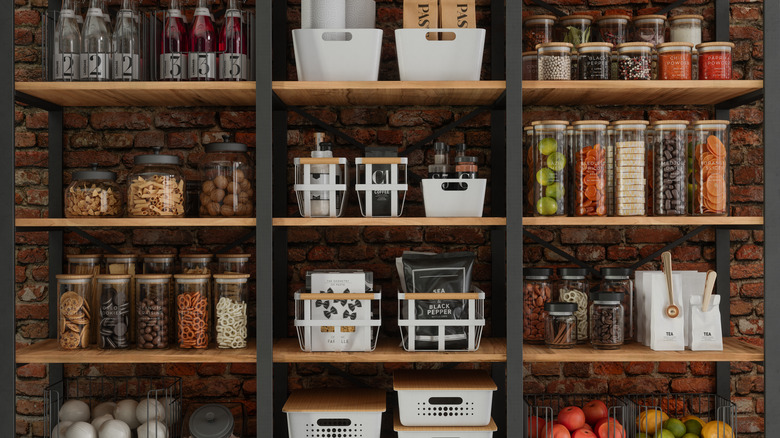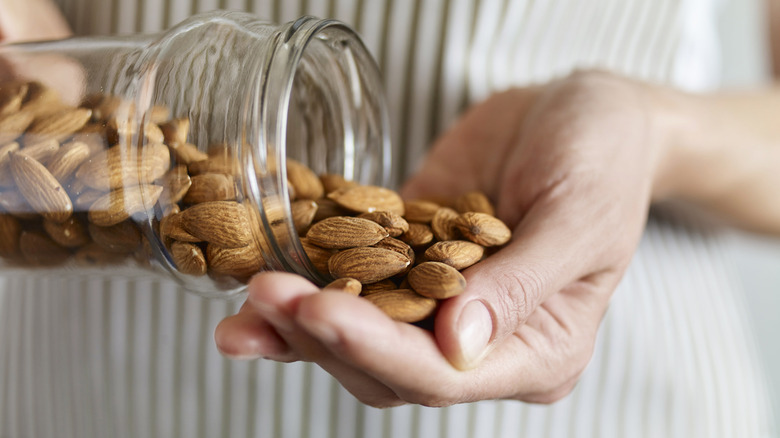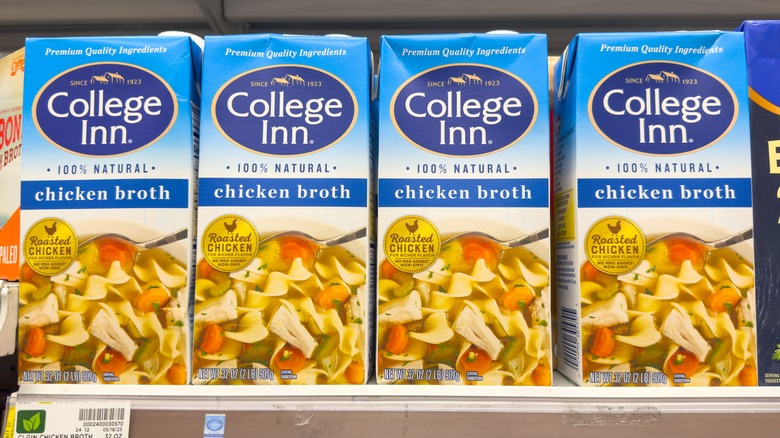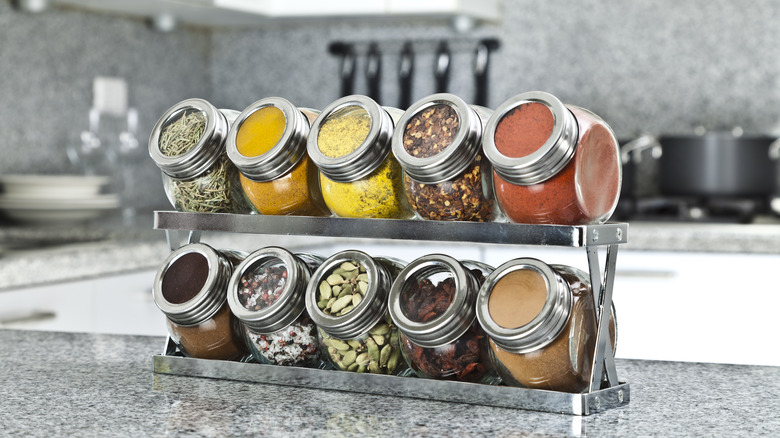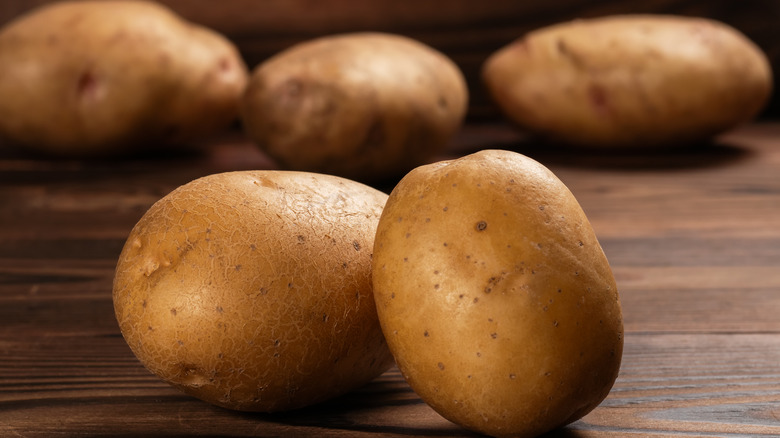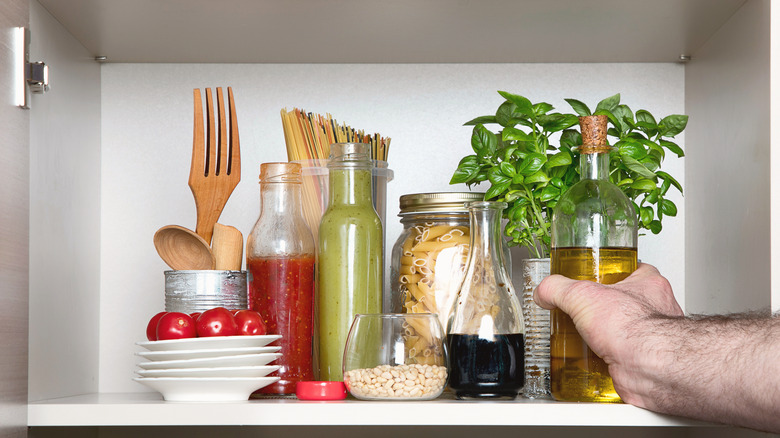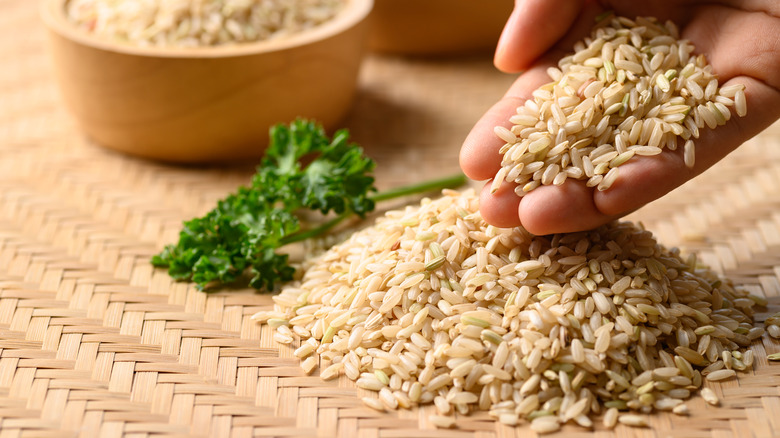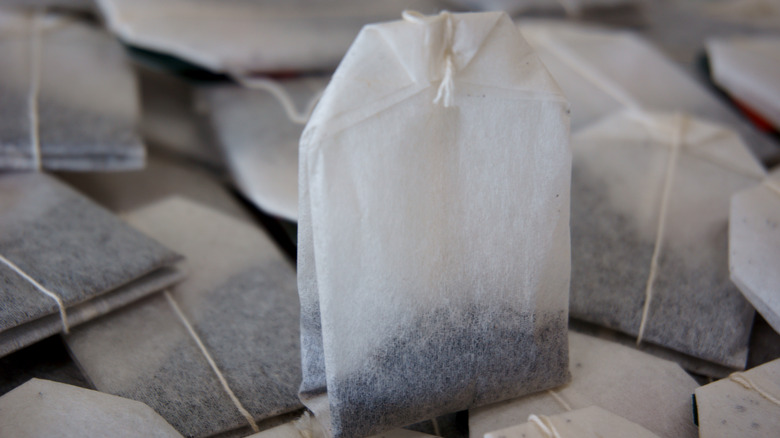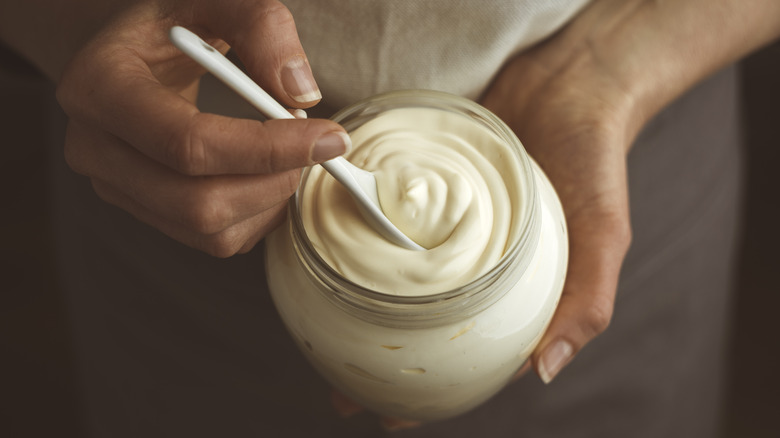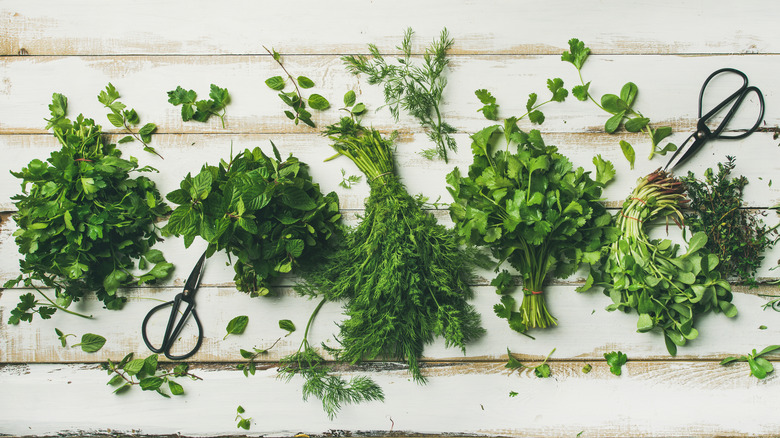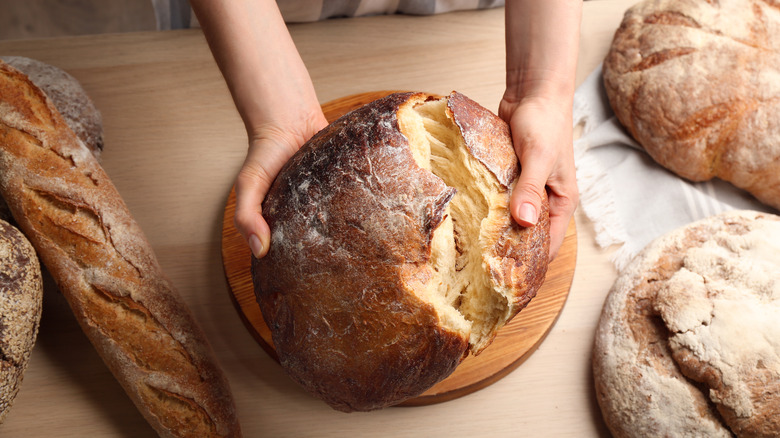12 Foods That Don't Last In Storage Like You Think
There are plenty of foods with an admirable shelf life that we love to keep on hand in our kitchens. For instance, honey doesn't go bad if you store it correctly, and powdered milk can last over 10 years in the right conditions. However, there are a number of ingredients with an undeserved reputation for having a nearly endless shelf life. Some of these are foods we shove to the back of our cabinets and forget about until they're needed. Others are items we use regularly but in such small amounts that they seem to last forever. Then there are those perishable items we assume will store well in the fridge for longer than they really do.
The consequences of keeping these items around longer than they're good for could range from a degraded flavor to a legitimate foodborne illness. Take stock of your pantry or fridge today to make sure you don't have any of these common offenders lurking about that should have been tossed out long ago or regularly inspected for freshness.
1. Nuts
If you store your nuts in the pantry and forget about them for a while, you're not alone. Take a peek into any kitchen, and that's where you're likely to find the peanuts, cashews, and mixed nuts. The problem with this room-temperature approach to storing nuts is that the unsaturated fats (yes, those good fats) start to break down in the presence of heat, air, and light, eventually producing free radicals.
This process leads to rancidity, which can taste as bad as it sounds depending on the degree. Once opened, nuts generally have a shelf life of just a few months at room temperature – that's it. If you transfer them to an airtight container as soon as you open the package, that helps mitigate the contact with air that causes oxidation, but temperature is still an issue.
Fortunately, there's a better place to store nuts that increases their shelf life to up to a year — the fridge. Even better than the fridge is the freezer, where nuts will stay fresh for over a year, and even up to three years depending on the variety. It's a good idea to transfer the nuts to an airtight plastic freezer bag or glass container (choose freezer-safe glass if necessary) to further keep oxidation at bay.
2. Opened store-bought broth
Store-bought broth is a godsend for the cook who needs convenience. Unopened boxed broth lasts a year past its printed sell-by date if stored in a cool, dry pantry, but what about once you've cracked open that seal? It seems like there's always at least a little broth left over. You store it in the fridge, telling yourself you'll cook something else that requires broth within a few days or so, but let's be real — that may not happen until at least a week or so later, and this is where the problem starts. You might be surprised at how long store-bought broth stays fresh once opened: just three to four days, according to the USDA. The guideline is basically the same for store-bought chicken and vegetable broth.
Once again, the freezer steps up and saves the day. If you've taken a realistic assessment of your meal prep for the next week and acknowledged you won't be using that leftover broth, transfer it to a zip-top bag or an ice cube tray. Store chicken broth in the freezer for up to three months and vegetable broth for up to six months for best results.
3. Spices
In many kitchens, the spices live close to the stove for maximum convenience. However, this isn't the best place if you want them to last as long as possible. Unlike some of the other ingredients on our list, spices don't technically spoil or reach a stage where they'll make you sick. What occurs over time is a diminishment of aroma, color, and flavor. They get blah, in other words, and that is not what we want when adding spices to a dish.
This loss of potency happens faster with ground rather than with whole spices. Technically, the latter can be stored for two to four years and the former for two to three years, per the USDA, but the clock starts ticking on their vigor as soon as you open the container. If you're storing them wrong, expect spices to lose their zest long before that time is up.
Just as with nuts, spices (whether whole or ground) should be stored away from air, heat, and light. Keeping them in a cool, dim pantry in an airtight glass or ceramic container is your best bet. How you use them also matters; moisture will not benefit their flavor and texture (and it can also cause mold growth), so use a spoon to sprinkle spices on hot food rather than shaking the container over a steaming pot or plate.
4. Potatoes
Raw potatoes may seem rugged and indestructible, but the mighty spud actually has some pretty specific requirements when it comes to freshness. Where and how you store them has a significant impact on how long they last. In the right conditions, you can expect a raw potato to keep for a few months. Kept at room temperature, though, and you're looking at only one to two weeks.
It's important to avoid light and heat when storing potatoes, so the best choice is a cool, dark spot like a basement or a dim pantry. Make sure the temperature stays between 45 and 50 degrees Fahrenheit, as anything colder disrupts the starch content, altering the taste and texture. In other words, don't store them in the fridge.
Avoid keeping them in a cabinet near the stove, too, as hotter temperatures rob them of moisture which leads to sprouting. Never eat sprouted potatoes, even if they still look good otherwise. They have high concentrations of a toxic chemical called solanine, which can cause many symptoms of food poisoning. Finally, avoid washing potatoes before storing them as it can lead to fungus growth. Similarly, don't keep them in an airtight container where excess moisture won't be able to escape, as good airflow is vital.
5. Olive oil
Besides being rich in antioxidants and potentially beneficial at reducing the risk of heart disease, stroke, and Alzheimer's, olive oil is just plain delicious. Americans consumed 381,000 metric tons of this iconic fat in 2022 (per Statista), which means there are a lot of bottles of it sitting in our kitchens right now. The key question is: Where are you keeping your olive oil? If you're making one or more of these common storage mistakes, you could be killing its shelf life.
As with many other foods that go bad faster than you think, light, heat, and air will ruin olive oil. Exposure to these elements leads to degradation in even the best brands of olive oil. Aside from affecting the taste and quality, those precious antioxidants are lost as well.
For this reason, store olive oil away from the stove or windows, and close the bottle carefully to keep air out. A cool, dark cabinet or pantry should keep your olive oil in good shape for up to three months. Avoid the refrigerator, though, as there's some evidence that frequently moving olive oil between hot and room-temperature environments can compromise it.
6. Brown rice
When we think of shelf-stable staples, rice is often one of the first that comes to mind. Always having it on hand in your pantry makes meal preparation that much more convenient. If it's been a while since you incorporated brown rice into a meal, you might be harboring a spoiled grain in your pantry. Not only does brown rice cook slower than white rice, but it also stays fresh for less time.
While dry white rice is shelf-stable for up to two years, dry brown rice needs to be tossed three to six months after its date of manufacture. It spoils more quickly due to the oil in its bran layer, which can oxidize and go rancid, much like with nuts. White rice has been stripped of the bran and germ, so although it lacks some of the antioxidants, vitamins, and minerals of brown rice, it's a bit less finicky in terms of storage.
To store brown (or any) rice long-term, it's recommended to keep it at 40 degrees Fahrenheit or colder – so the fridge is actually perfect. Storing it in the freezer, where it can last up to two years, is even better. If that's not possible, at least try to keep dry rice at a temperature below 70 degrees Fahrenheit.
7. Tea bags
Do you hold onto boxes of tea bags for ages thinking they'll stay fresh indefinitely? Tea has a best-before date printed on the box, a guideline you should adhere to if you care about its flavor and aroma, traits that weaken with time. Even worse, moisture may have invaded your tea bags if you haven't been storing them properly, which can accelerate the staling process along with the classic culprits: air, light, and heat. As with many foods on our list, store tea in an airtight container in a cool, dry place out of direct sunlight. This way, it should stay at its best for half a month to a year.
Different types of tea also vary in terms of shelf life. Green and white teas are the most prone to deterioration, so if you've been playing host to one of these varieties for who-knows-how-long, it's time to check for freshness. As tea gets darker, its durability increases, but it's still a good idea to keep black tea in a cool environment. Pu-erh tea, which is fermented, is a bit of an exception in that it can improve with time, but that's only if it's strictly kept away from moisture, heat, and light.
8. Store-bought mayonnaise
If you don't use mayo frequently, the bottle sitting in your fridge right now might be ready to toss. Food safety myths about mayo abound, one being that it's fine to forget about this creamy condiment once you've opened it. This misunderstanding is probably due in part to the fact that store-bought mayo is pasteurized and made with acidic ingredients like vinegar and lemon that help prevent the growth of bacteria, but that doesn't mean you can hold onto an open bottle indefinitely with an out-of-sight-out-of-mind approach.
If mayonnaise is kept tightly sealed and refrigerated, you can typically expect it to stay good for two to three months after the best by date on the label. The USDA's specific advice is to keep mayo no longer than two months after opening. That said, it's always a good idea to check for signs of spoilage if you've passed the best by date. A bad or unusual odor, color, or texture, and certainly any sign of mold, mean it's time to toss that jar.
9. Wine
Wine has a serious reputation for its shelf stability, and the expression "aging like fine wine" is often repeated. There's just one little issue with this idiom: Not all wines age the same way, and the legendary hardiness of unopened wine only comes into effect if it's stored under the right conditions. The cardinal rule for storage is that heat is a wine killer. This is why the kitchen is generally a terrible place to store it; the room temperature fluctuates too much and is rarely cool enough to support the quality of a bottle long-term. (As for opened wine, the fridge is the best storage spot.)
How cool are we talking when it comes to keeping wine for years, and how long can you actually expect it to last? Generally, you should keep your vino at a consistent temperature between 45 and 65 degrees Fahrenheit. If it's kept at this temperature and away from light, unopened white and rosé wine can be consumed within one to two years after the expiration date on the labels (if you can find one). On the other hand, unopened red wine stays fresh for two to three years after its printed expiration date. Red wine's longer shelf life is due to the higher tannin content, which helps to preserve the wine.
10. Hard-boiled eggs
Compared to many perishable foods, raw eggs are safe to eat for a long time: three to five weeks in the refrigerator. During this time, their expiration date can sail right by, according to the USDA, with no adverse effects. However, don't make the mistake of thinking hard-boiled eggs are the same just because their shells are intact. Once you've hard-cooked an egg, you've got one week to consume it, provided you've stored it unpeeled in the fridge at 40 degrees Fahrenheit or lower. A peeled hard-boiled egg stored in the refrigerator is safe to consume for only two days.
One significant food safety issue about hard-boiled eggs is their potential to raise the temperature of other foods in your fridge to an unsafe level, albeit temporarily. To prevent this, rapidly cool hard-boiled eggs in their shells by placing them in an ice bath for 20 to 40 minutes. Only then can they be moved to the fridge, but avoid the cute little egg holders in the door, where they are frequently exposed to room temperature. Instead, an airtight container or bag with a good seal is a better choice. Place it in the back of the fridge or in one of the drawers, and you'll be at your safest.
11. Fresh herbs
Fresh herbs have a way of blessing whatever they touch. Fresh dill is a game-changing ingredient for adding flavor to plain rice, for instance, and mint adds a rich depth of flavor and fragrance to meatballs. If you've ever bought a bunch of fresh herbs only to find them wilting both in appearance and potency after a day or two, you're not alone. Unfortunately, herbs can't be stored in simple loose wrapping the way we might keep salad greens. They require a little more effort, and the specific method you use depends on the type of herbs you're trying to store.
For soft fresh herbs like dill, mint, or parsley, use the bouquet method to keep them fresh longer. Start by freeing them from their twisty-tied bunch, then clean them under running water and dry them thoroughly. Snip off about half an inch from the bottom of the stems and place them in small bunches in a container of water, as if you were preparing a bouquet of flowers. One to two inches of water is enough; you don't want the leaves getting wet. Finally, cover the leaves with a clear plastic bag and move the whole ensemble to the fridge, where it should remain fresh for weeks.
For hardier herbs like rosemary, thyme, or oregano, the best storage method is to bundle them up lightly in a damp paper towel. Then, place them in an airtight container or zip-top bag before storing them in the fridge.
12. Bread
If you're thinking of branching out and baking your own bread, don't expect it to stay fresh and soft at room temperature for days on end like the store-bought version does. Commercial bread contains preservatives and additives designed to extend the shelf life and keep it soft as long as possible. DIY bread does not, which is why you might find your freshly baked creations turning stale the day after they come out of the oven. You can always soften bread that's gone stale, but knowing how to store your loaves will prevent you from having to correct this issue so soon; it also helps ensure the bread doesn't grow mold.
Keeping home-baked bread fresh is a bit of a balancing act between too much and too little air. Leaving bread exposed to the air causes it to stale, but lack of airflow (and excess moisture) causes mold growth. With this in mind, the best place for your bread is a bread box – store it unsliced. Barring that, wrapping the loaf in paper or a clean dish towel is another good option.
Plastic bags are generally frowned upon for the job of preserving bread; they'll make the crust too soft and squishy. However, this isn't a hard-and-fast rule. If your climate is extremely dry, for example, a very low-moisture bread may need a sealed plastic zip-top bag to keep from drying out completely.
